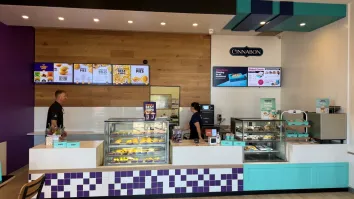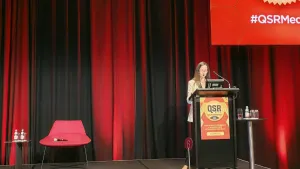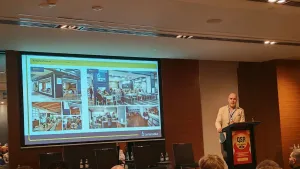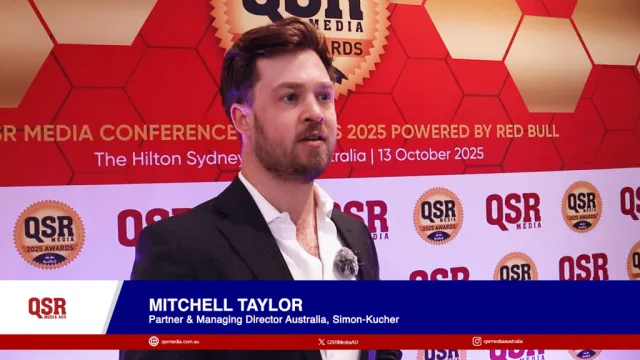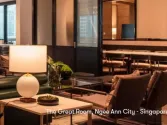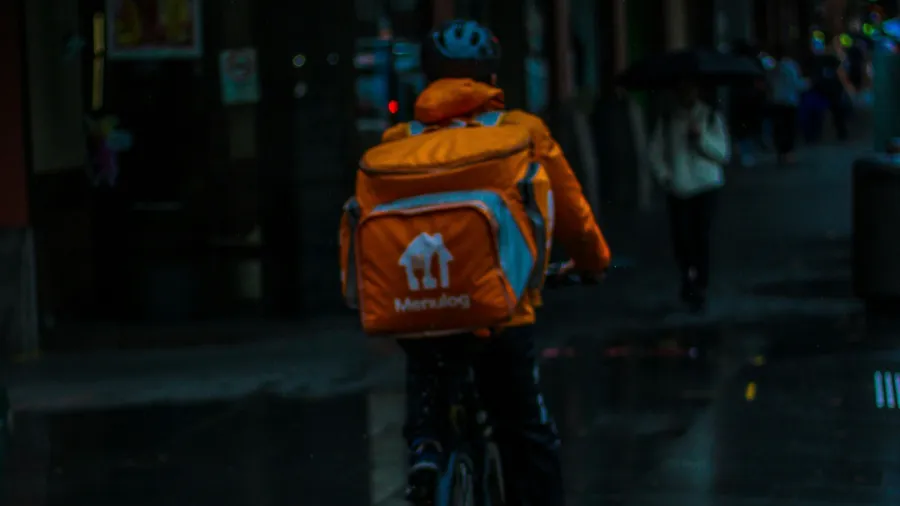
Menulog exits Australia after 20 years as Uber, DoorDash dominate
Its retreat was hardly surprising after it struggled for years to keep market share.
Menulog will leave the Australian market after two decades, ending a long-standing presence despite high-profile marketing campaigns featuring Snoop Dogg, Katy Perry, and Christina Aguilera.
The closure highlights fierce competition in the country’s food delivery sector and signals consolidation around Uber Eats and DoorDash. Analysts said Menulog’s retreat was hardly surprising. The platform struggled for years to maintain market share.
Menulog customers tend to migrate to other platforms if they can’t find what they want, Gareth Howard, managing director at Blue Coral Concepts Pty Ltd., which operates Five Guys, Italian Street Kitchen, and Ribs & Burgers, told QSR Media. Uber users rarely leave the app, he pointed out.
He noted that delivery accounts for about 20% of Ribs & Burgers’ sales, with Uber Eats commanding 85% to 90% of that market, whilst the rest is split between Menulog and DoorDash. “It's hard to see how you can have brand ambassadors such as Snoop Dog if you only have 5-10% market share,” he said in an emailed reply to questions.
Jeff Vassel, global business development manager at Geotech Information Services Pty Ltd., cited operational and strategic factors behind Menulog’s decline.
Despite strong marketing, Menulog has underperformed relative to Uber. Over the years, Uber reduced delivery commissions, expanded service areas, and enabled restaurants to conduct their own deliveries, lowering costs, he pointed out.
“Menulog has had challenges with profitability, reporting significant operating losses in recent years,” he said in an email. It likely lost market share after ceding ground in lower-income and regional areas, which have been most affected by cost-of-living pressures, he added.
Emma Pitfield, a partner at KPMG Australia, said Menulog’s exit reflects broader shifts in consumer behavior. Superapp ecosystems that combine transport, food delivery, and courier services like Uber create loyalty through convenience and presence across multiple aspects of daily life.
This trend is well-established in Asia, with Grab, Gojek, and Meituan dominating by meeting multiple consumer needs in one place, she said. She also cited Australia’s relatively small market size, which limits the number of viable providers.
“Cost-of-living challenges as well as operating costs mean consumers and restaurants are price-sensitive, and there may be a concentration in third-party providers that are being used,” she said in an emailed reply to questions.
Delivery service duopoly
Analysts said Menulog’s departure formalises a duopoly in Australia. Mitchell Taylor, a partner and managing director for Australia at Simon-Kucher & Partners Strategy & Marketing Consultants Pty Ltd., said short-term volatility would be minor due to Menulog’s low market share, but long-term effects might include rising commissions and fewer promotions.
“Delivery food riders will also be affected, meaning fewer employment options and more pressure on conditions,” he said in an email. He added that restaurants should focus on direct ordering, loyalty programs, and white-label partnerships to retain control over pricing, data, and promotions.
Anuran Dhar, practice head for foodservice, wisdom sectors, and agribusiness at GlobalData Plc, warned of broader impacts on restaurants and riders.
“Small and medium-sized food outlets, in particular, may find themselves with less leverage in negotiating fees and contract terms, something which Menulog once provided,” he said in an emailed reply to questions. He added that the move could reignite discussions around regulatory protection for gig workers, a topic that remains largely unresolved in Australia.
Richard Goodman, CEO at Foodco, which operates Muffin Break and Jamaica Blue, said Menulog’s exit mirrors the fate of Deliveroo, which left Australia in 2022.
“DoorDash has largely taken the market share from Deliveroo post-closure and has not left much space for Menulog anymore,” he told QSR Media by telephone. “With Menulog now gone, it's clear there's really only space for one or two aggregators.”
Dhar noted that even within the duopoly, market shares remain unequal. “One likely has a larger market share, whilst the other trails behind by some margin. So, while the term duopoly applies, the dynamics are not exactly balanced.”
Analysts said Menulog’s lack of a clear strategy contributed to its decline. Taylor said it could have avoided exit by committing to a defendable niche rather than straddling multiple delivery models.
“Tactically, that could have meant prioritising large QSRs (quick-service restaurants) with lower commissions, easy brand integration and white label partnerships, carving out and owning regional Australia, or doubling down on a pure marketplace rather than straddling restaurant- and platform-delivered models,” he added.
Dhar said Menulog could have survived by targeting underserved regional markets, premium or specialty cuisine, or other niches less sensitive to price competition. Operational efficiency, leaner cost structures, and smarter marketing could also have improved viability.
Diversifying into groceries or retail could have provided additional revenue streams beyond restaurant deliveries, reducing dependence on a single segment, he added.
Howard said Menulog’s brand partnerships, whilst high-profile, failed to translate into the scale needed to compete.
Goodman noted that given the competitive pressures of the Australian market, platforms must be best-in-class and occupy the top two spots. “If you're not, then you will likely follow the same path of Deliveroo, and now, Menulog.”
Menulog’s departure marks the end of a 20-year experiment in Australia—a cautionary tale showing that marketing muscle and celebrity endorsements cannot compensate for strategic missteps and structural disadvantages in a rapidly consolidating digital landscape.



